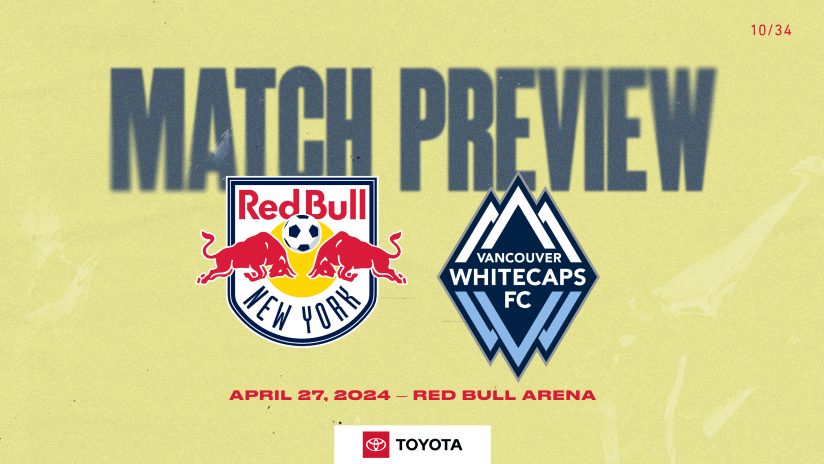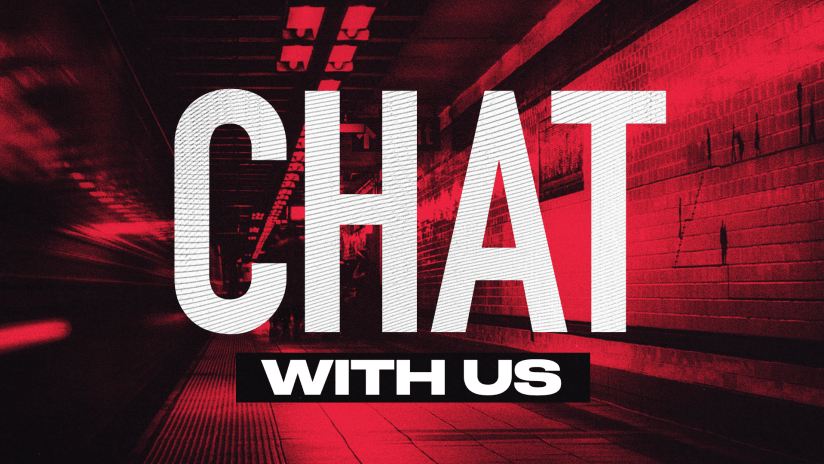Over the weekend, the Red Bulls remained unbeaten for the season following a draw against LA Galaxy. This claim will be challenged tomorrow by Pablo Mastroeni, who brings his Rapids team to Red Bull Arena after a 1-1 draw with FC Dallas. The team has struggled in the beginning of the campaign, picking up just seven points from their first seven games despite an emphatic 4-0 win against Dallas during the first meeting back in April.
Coverage of the match between the New York Red Bulls and Colorado Rapids on Wednesday, April 29 at Red Bull Arena will begin at 7:30 p.m. EDT (TV: MSG; RADIO: RBNY English/Spanish Internet Radio). For travel tips and further directions on how to get to the game, check out the Red Bull Arena Transportation HUB.
Colorado Rapids
Tomorrow, Jesse Marsch's team will be faced with a similar shape to that of the Galaxy, as Colorado also utilizes a 4-4-2 formation with Dillon Powers pressing high alongside Dominque Badji. However, the dynamics of the system and orientation of key players means that Colorado’s 4-4-2 is considerably different, especially in attack.
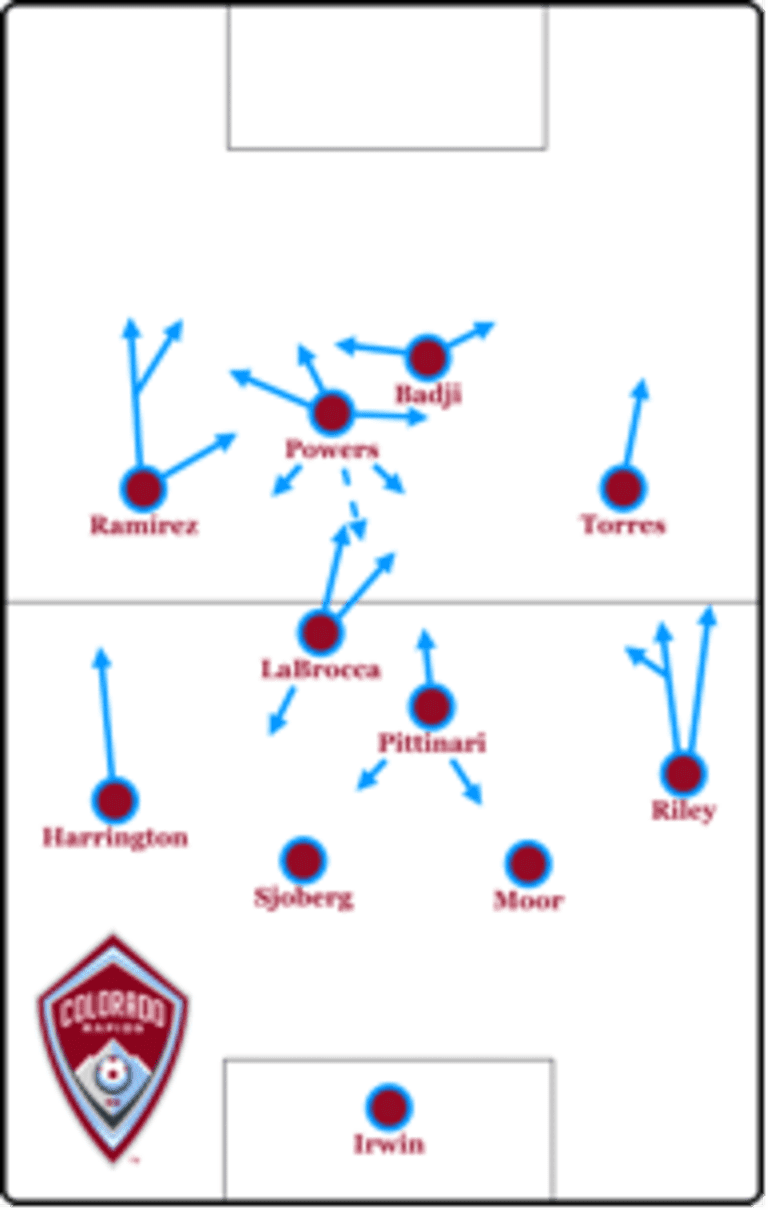
The roles of LA Galaxy's wide players, particularly Baggio Husidic, were quite variable shown by their situational support inside towards the center of the pitch. In contrast, the roles of Juan Ramirez and Gabriel Torres are more linear as they stay near the touchline with less movements inside, especially in the case of Torres who rarely drifted inside against Dallas. As for Ramirez, he would move centrally if the ball was on the opposite wing, but otherwise was based near the touchline.
In the Rapids’ last game, the positional structure of the team displayed a distinct tendency for wing play. At times, this meant no connecting central players as Powers played high alongside Badji with Ramirez and Torres spread out wide. As displayed below, Colorado’s shape is missing a link between the midfield and attack in the middle of the field.
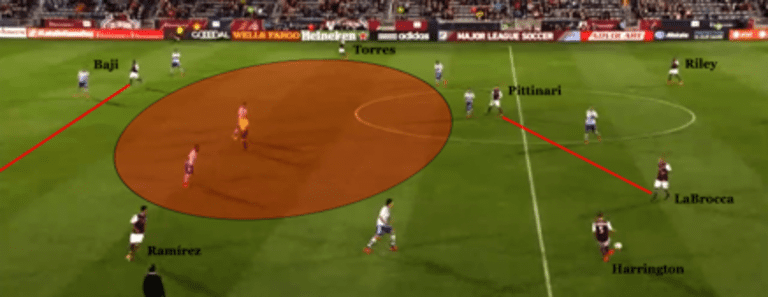
As a result, their deep build-up game often required a long ball towards the attack or a diagonal pass to the winger, which was challenged by Dallas easily. The wide build-up was made through the full-back, but given the little usable space due to his wide positioning, he could be pressed easily against the touchline.
Long balls were often a necessity with the attackers disconnected from the deeper players, completely inaccessible by a standard pass. Given the wide players’ straightforward approach down the touchline and Powers' very high positioning, they were often missing the linking player in the center. Only in a few cases did Powers drop deep to support the possession game and even when he did, he made mostly simple horizontal passes and rarely advanced the ball up-field.
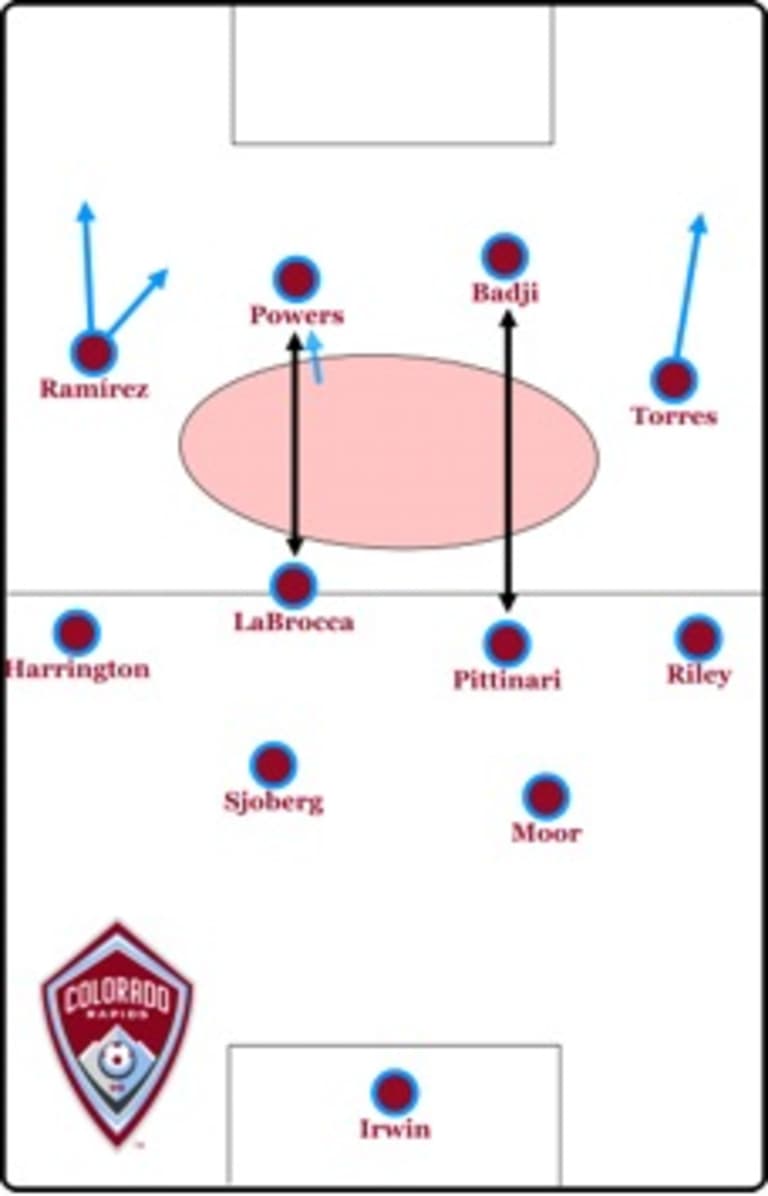
In central midfield, the partnership between Nick LaBrocca and Lucas Pittinari is well balanced. LaBrocca maintains a higher positioning and supports in the attack while Pittinari stays deeper as a defensive insurance and collects possession from the back line at the start of a play. After going behind against Dallas, the midfield tandem’s roles became more extreme. In the case of LaBrocca, he was often seen very close to Badji and Powers. Eventually they profited from this as the central midfielder finished the equalizer, capitalizing on the poor Dallas marking as they failed to track his run from midfield.
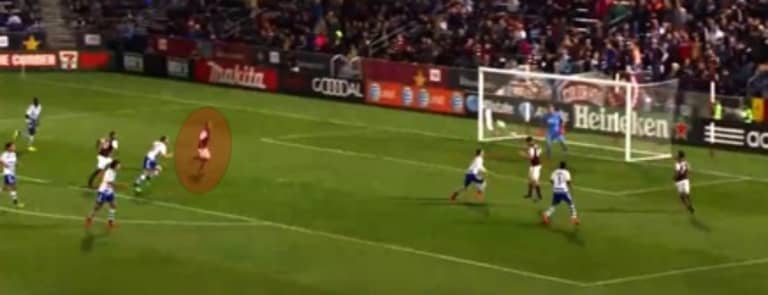
In defense, the Rapids are organized in a 4-4-2 shape, which became a 4-2-4 during situations of high pressure. The two central forwards' roles were to block any passes into the two Dallas central midfielders. In doing this, Colorado’s shape was frequently lacking vertical compaction and the space between the forward and midfield lines were too big, as shown in the picture below.
New York Red Bulls
Following Sunday's clash against the Galaxy, the Red Bulls are still unbeaten in the new MLS season. Marsch’s side continued seem to have acclimated to pressing game with players consistently executing a coordinated press.
One aspect of RBNY's game which could be pivotal is its transitional play. Given Colorado’s situational 4-2-4 attacking shape, the Rapids are often exposed on the break after a loss of possession. The two wide players are slow at times in their recovery runs, meaning the defensive line and two central midfielders can be exposed. There is no doubt that the pace of Lloyd Sam and Bradley Wright-Phillips will be important, should Marsch look to this strategy.
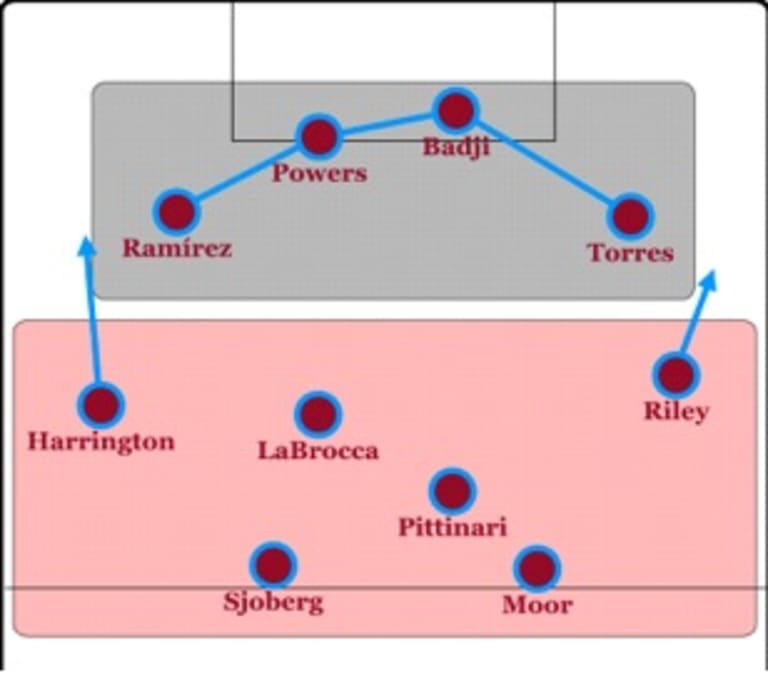
Colorado were caught in transition on a few occasions against Dallas, when the defensive six were exposed on the break. The effects became greater when the full-backs moved forward to join the attack, leaving the defense even more prone to a fast break.

As long as the Red Bulls continue to execute its pressing game to the highest level, Marsch's side shouldn't be threatened by Colorado's direct game. It could even prove to be advantageous if they force the Rapids into their wide, short build-up play through the full-backs.
The pace in attack could be a vital asset against Colorado, who appeared susceptible on the break in recent games. Lloyd Sam will test the work rate of Ramirez, who will need to have an impressive game against the Red Bulls’ leading goal scorer.
Tom Payne is an analyst and writer for Spielverlagerung.com (@spielvercom) - a football tactics website focusing on match and team analysis. You can follow him on Twitter at @tompayneftbl.



